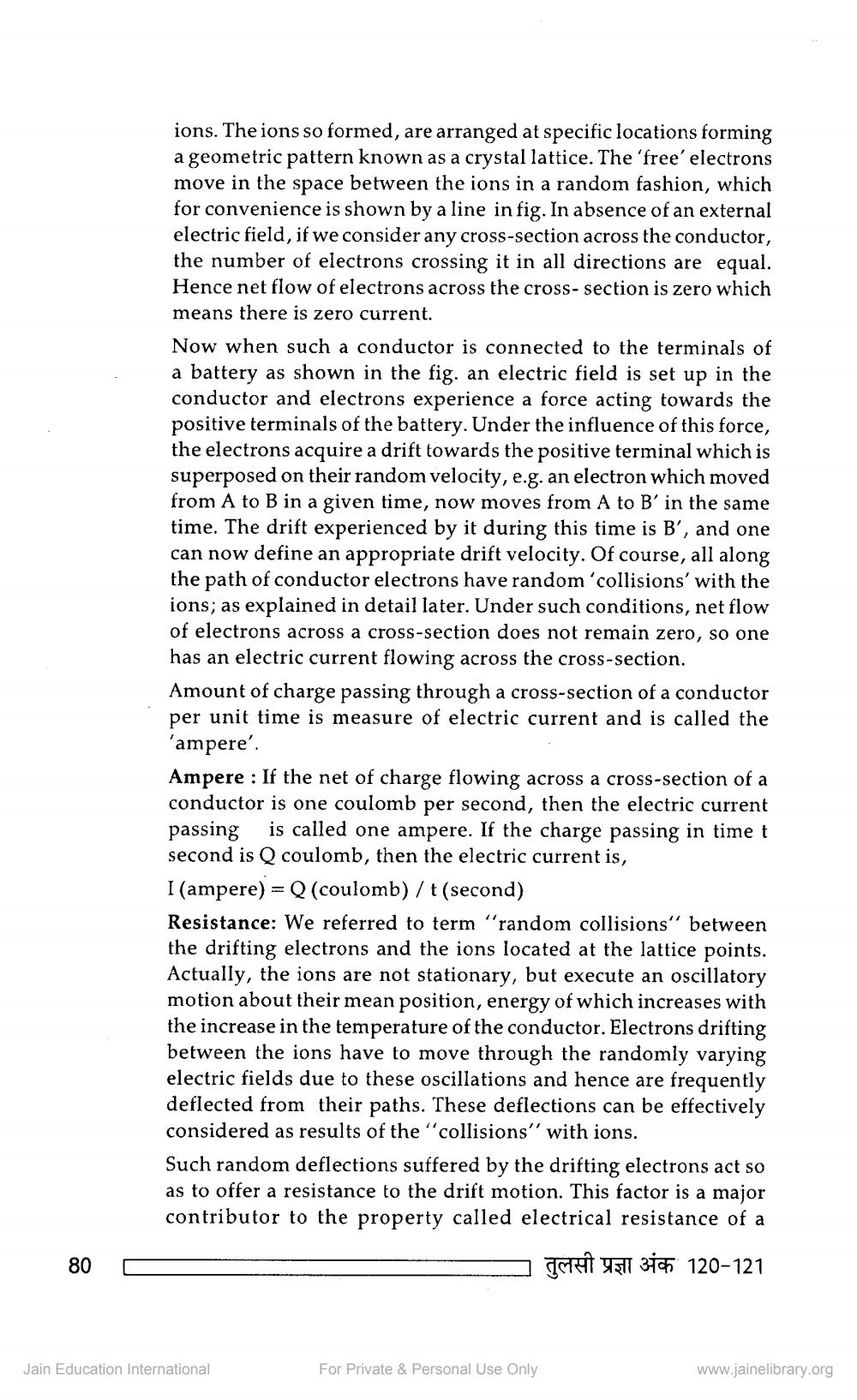________________
ions. The ions so formed, are arranged at specific locations forming a geometric pattern known as a crystal lattice. The 'free' electrons move in the space between the ions in a random fashion, which for convenience is shown by a line in fig. In absence of an external electric field, if we consider any cross-section across the conductor, the number of electrons crossing it in all directions are equal. Hence net flow of electrons across the cross-section is zero which means there is zero current. Now when such a conductor is connected to the terminals of a battery as shown in the fig. an electric field is set up in the conductor and electrons experience a force acting towards the positive terminals of the battery. Under the influence of this force, the electrons acquire a drift towards the positive terminal which is superposed on their random velocity, e.g. an electron which moved from A to B in a given time, now moves from A to B' in the same time. The drift experienced by it during this time is B', and one can now define an appropriate drift velocity. Of course, all along the path of conductor electrons have random collisions' with the ions; as explained in detail later. Under such conditions, net flow of electrons across a cross-section does not remain zero, so one has an electric current flowing across the cross-section. Amount of charge passing through a cross-section of a conductor per unit time is measure of electric current and is called the 'ampere'. Ampere : If the net of charge flowing across a cross-section of a conductor is one coulomb per second, then the electric current passing is called one ampere. If the charge passing in time t second is Q coulomb, then the electric current is, I (ampere) = Q(coulomb) / t(second) Resistance: We referred to term "random collisions between the drifting electrons and the ions located at the lattice points. Actually, the ions are not stationary, but execute an oscillatory motion about their mean position, energy of which increases with the increase in the temperature of the conductor. Electrons drifting between the ions have to move through the randomly varying electric fields due to these oscillations and hence are frequently deflected from their paths. These deflections can be effectively considered as results of the collisions' with ions. Such random deflections suffered by the drifting electrons act so as to offer a resistance to the drift motion. This factor is a major contributor to the property called electrical resistance of a
80
C
IN
U511 31ch 120-121
Jain Education International
For Private & Personal Use Only
www.jainelibrary.org




